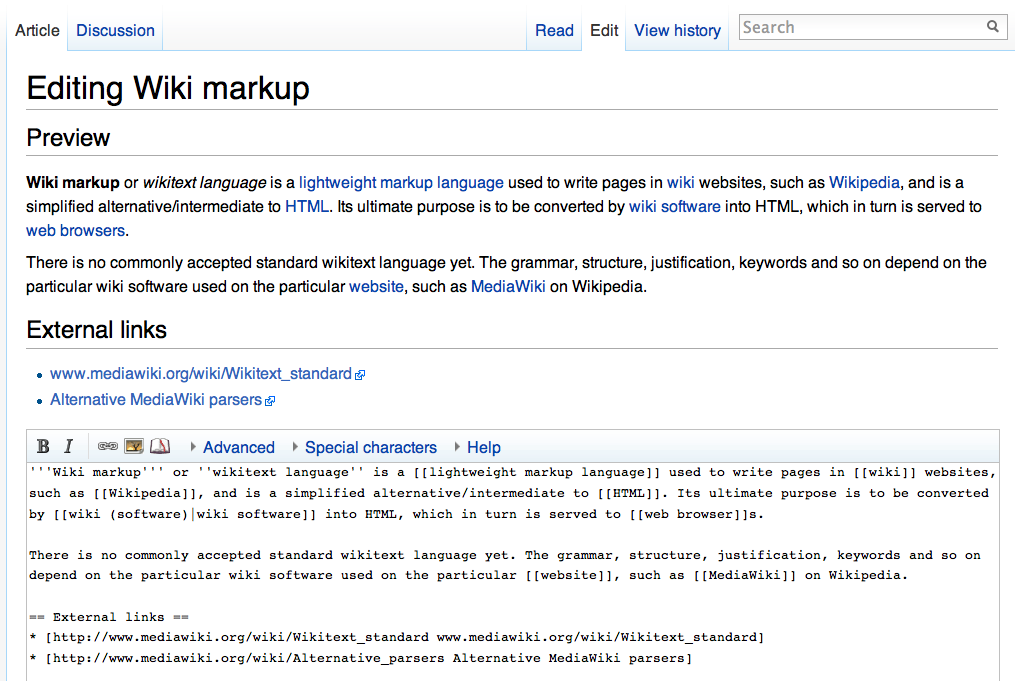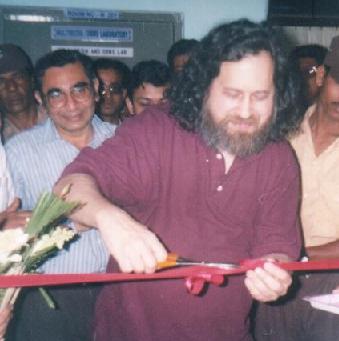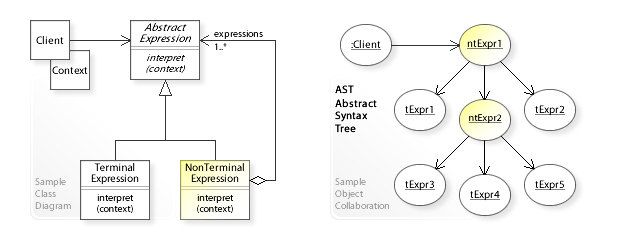|
Ousterhout's Dichotomy
Ousterhout's dichotomy is computer scientist John Ousterhout's categorization that high-level programming languages tend to fall into two groups, each with distinct properties and uses: ''system programming languages'' and ''scripting languages'' – compare programming in the large and programming in the small. System programming languages (or ''applications languages'') usually have the following properties: * They are typed statically * They support creating complex data structures * Programs in them are compiled into machine code * Programs in them are meant to operate largely independently of other programs System programming languages tend to be used for components and applications with large amounts of internal functionality such as operating systems, database servers, and Web browsers. These applications typically employ complex algorithms and data structures and require high performance. Prototypical examples of system programming languages include C, OCaml and Modula- ... [...More Info...] [...Related Items...] OR: [Wikipedia] [Google] [Baidu] |
Computer Scientist
A computer scientist is a scientist who specializes in the academic study of computer science. Computer scientists typically work on the theoretical side of computation. Although computer scientists can also focus their work and research on specific areas (such as algorithm and data structure development and design, software engineering, information theory, database theory, theoretical computer science, numerical analysis, programming language theory, compiler, computer graphics, computer vision, robotics, computer architecture, operating system), their foundation is the theoretical study of computing from which these other fields derive. A primary goal of computer scientists is to develop or validate models, often mathematical, to describe the properties of computational systems (Processor (computing), processors, programs, computers interacting with people, computers interacting with other computers, etc.) with an overall objective of discovering designs that yield useful ... [...More Info...] [...Related Items...] OR: [Wikipedia] [Google] [Baidu] |
Dynamic Typing
In computer programming, a type system is a logical system comprising a set of rules that assigns a property called a ''type'' (for example, integer, floating point, string) to every '' term'' (a word, phrase, or other set of symbols). Usually the terms are various language constructs of a computer program, such as variables, expressions, functions, or modules. A type system dictates the operations that can be performed on a term. For variables, the type system determines the allowed values of that term. Type systems formalize and enforce the otherwise implicit categories the programmer uses for algebraic data types, data structures, or other data types, such as "string", "array of float", "function returning boolean". Type systems are often specified as part of programming languages and built into interpreters and compilers, although the type system of a language can be extended by optional tools that perform added checks using the language's original type syntax ... [...More Info...] [...Related Items...] OR: [Wikipedia] [Google] [Baidu] |
Programming Paradigms
A programming paradigm is a relatively high-level way to conceptualize and structure the implementation of a computer program. A programming language can be classified as supporting one or more paradigms. Paradigms are separated along and described by different dimensions of programming. Some paradigms are about implications of the execution model, such as allowing side effects, or whether the sequence of operations is defined by the execution model. Other paradigms are about the way code is organized, such as grouping into units that include both state and behavior. Yet others are about syntax and grammar. Some common programming paradigms include (shown in hierarchical relationship): * Imperative code directly controls execution flow and state change, explicit statements that change a program state ** procedural organized as procedures that call each other ** object-oriented organized as objects that contain both data structure and associated behavior, uses data struc ... [...More Info...] [...Related Items...] OR: [Wikipedia] [Google] [Baidu] |
Software Engineering Folklore
Software consists of computer programs that instruct the execution of a computer. Software also includes design documents and specifications. The history of software is closely tied to the development of digital computers in the mid-20th century. Early programs were written in the machine language specific to the hardware. The introduction of high-level programming languages in 1958 allowed for more human-readable instructions, making software development easier and more portable across different computer architectures. Software in a programming language is run through a compiler or interpreter to execute on the architecture's hardware. Over time, software has become complex, owing to developments in networking, operating systems, and databases. Software can generally be categorized into two main types: # operating systems, which manage hardware resources and provide services for applications # application software, which performs specific tasks for users The rise of clou ... [...More Info...] [...Related Items...] OR: [Wikipedia] [Google] [Baidu] |
Programming Language Folklore
Program (American English; also Commonwealth English in terms of computer programming and related activities) or programme (Commonwealth English in all other meanings), programmer, or programming may refer to: Business and management * Program management, the process of managing several related projects * Time management * Program, a part of planning Arts and entertainment Audio * Programming (music), generating music electronically * Radio programming, act of scheduling content for radio * Synthesizer programmer, a person who develops the instrumentation for a piece of music Video or television * Broadcast programming, scheduling content for television * Program music, a type of art music that attempts to render musically an extra-musical narrative * Synthesizer patch or program, a synthesizer setting stored in memory * "Program", an instrumental song by Linkin Park from '' LP Underground Eleven'' * Programmer, a film on the lower half of a double feature bill; see B-movie S ... [...More Info...] [...Related Items...] OR: [Wikipedia] [Google] [Baidu] |
Wiki
A wiki ( ) is a form of hypertext publication on the internet which is collaboratively edited and managed by its audience directly through a web browser. A typical wiki contains multiple pages that can either be edited by the public or limited to use within an organization for maintaining its internal knowledge base. Its name derives from the first user-editable website called " WikiWikiWeb," with "wiki" being a Hawaiian word meaning "quick." Wikis are powered by wiki software, also known as wiki engines. Being a form of content management system, these differ from other web-based systems such as blog software or static site generators in that the content is created without any defined owner or leader. Wikis have little inherent structure, allowing one to emerge according to the needs of the users. Wiki engines usually allow content to be written using a lightweight markup language and sometimes edited with the help of a rich-text editor. There are dozens of differ ... [...More Info...] [...Related Items...] OR: [Wikipedia] [Google] [Baidu] |
Richard Stallman
Richard Matthew Stallman ( ; born March 16, 1953), also known by his initials, rms, is an American free software movement activist and programmer. He campaigns for software to be distributed in such a manner that its users have the freedom to use, study, distribute, and modify that software. Software which ensures these freedoms is termed free software. Stallman launched the GNU Project, founded the Free Software Foundation (FSF) in October 1985, developed the GNU Compiler Collection and GNU Emacs, and wrote all versions of the GNU General Public License. Stallman launched the GNU Project in September 1983 to write a Unix-like computer operating system composed entirely of free software. With that he also launched the free software movement. He has been the GNU project's lead architect and organizer, and developed a number of pieces of widely used GNU software including among others, the GNU Compiler Collection, GNU Debugger, and GNU Emacs text editor. Stallman pioneered the ... [...More Info...] [...Related Items...] OR: [Wikipedia] [Google] [Baidu] |
Batch File
A batch file is a Scripting language, script file in DOS, OS/2 and Microsoft Windows. It consists of a series of Command (computing), commands to be executed by the command-line interpreter, stored in a plain text file. A batch file may contain any command the interpreter accepts interactively and use constructs that enable conditional branching and looping within the batch file, such as If statement, IF, Foreach loop, FOR, and GOTO label (computer science), labels. The term "batch" is from batch processing, meaning "non-interactive execution", though a batch file might not process a ''batch'' of multiple data. Similar to Job Control Language (JCL), DIGITAL Command Language, DCL and other systems on mainframe and minicomputer systems, batch files were added to ease the work required for certain regular tasks by allowing the user to set up a script to automate them. When a batch file is run, the Shell (computing), shell program (usually COMMAND.COM or cmd.exe) reads the file and ex ... [...More Info...] [...Related Items...] OR: [Wikipedia] [Google] [Baidu] |
C Shell
The C shell (csh or the improved version, tcsh) is a Unix shell created by Bill Joy while he was a graduate student at University of California, Berkeley in the late 1970s. It has been widely distributed, beginning with the 2BSD release of the Berkeley Software Distribution (BSD) which Joy first distributed in 1978. Other early contributors to the ideas or the code were Michael Ubell, Eric Allman, Mike O'Brien and Jim Kulp. The C shell is a command processor which is typically run in a text window, allowing the user to type and execute commands. The C shell can also read commands from a file, called a script. Like all Unix shells, it supports filename wildcarding, piping, here documents, command substitution, variables and control structures for condition-testing and iteration. What differentiated the C shell from others, especially in the 1980s, were its interactive features and overall style. Its new features made it easier and faster to use. The overall style of ... [...More Info...] [...Related Items...] OR: [Wikipedia] [Google] [Baidu] |
AppleScript
AppleScript is a scripting language created by Apple Inc. that facilitates automated control of Mac applications. First introduced in System 7, it is currently included in macOS in a package of automation tools. The term ''AppleScript'' may refer to the scripting language, to a script written in the language, or to the macOS Open Scripting Architecture that underlies the language. AppleScript is primarily a mechanism for driving Apple events an inter-application communication (IAC) technology that exchanges data between and controls applications. Additionally, AppleScript supports basic calculations and text processing, and is extensible via scripting additions that add functions to the language. AppleScript is tightly bound to the Mac environment, similar to how Windows Script Host is bound to the Windows environment. In other words, AppleScript is not a general purpose scripting language like Python. One way that AppleScript is bound to the unique aspects of its env ... [...More Info...] [...Related Items...] OR: [Wikipedia] [Google] [Baidu] |
Python (programming Language)
Python is a high-level programming language, high-level, general-purpose programming language. Its design philosophy emphasizes code readability with the use of significant indentation. Python is type system#DYNAMIC, dynamically type-checked and garbage collection (computer science), garbage-collected. It supports multiple programming paradigms, including structured programming, structured (particularly procedural programming, procedural), object-oriented and functional programming. It is often described as a "batteries included" language due to its comprehensive standard library. Guido van Rossum began working on Python in the late 1980s as a successor to the ABC (programming language), ABC programming language, and he first released it in 1991 as Python 0.9.0. Python 2.0 was released in 2000. Python 3.0, released in 2008, was a major revision not completely backward-compatible with earlier versions. Python 2.7.18, released in 2020, was the last release of ... [...More Info...] [...Related Items...] OR: [Wikipedia] [Google] [Baidu] |
Interpreter (computing)
In computer science, an interpreter is a computer program that directly executes instructions written in a programming or scripting language, without requiring them previously to have been compiled into a machine language program. An interpreter generally uses one of the following strategies for program execution: # Parse the source code and perform its behavior directly; # Translate source code into some efficient intermediate representation or object code and immediately execute that; # Explicitly execute stored precompiled bytecode made by a compiler and matched with the interpreter's virtual machine. Early versions of Lisp programming language and minicomputer and microcomputer BASIC dialects would be examples of the first type. Perl, Raku, Python, MATLAB, and Ruby are examples of the second, while UCSD Pascal is an example of the third type. Source programs are compiled ahead of time and stored as machine independent code, which is then linked at run-ti ... [...More Info...] [...Related Items...] OR: [Wikipedia] [Google] [Baidu] |





